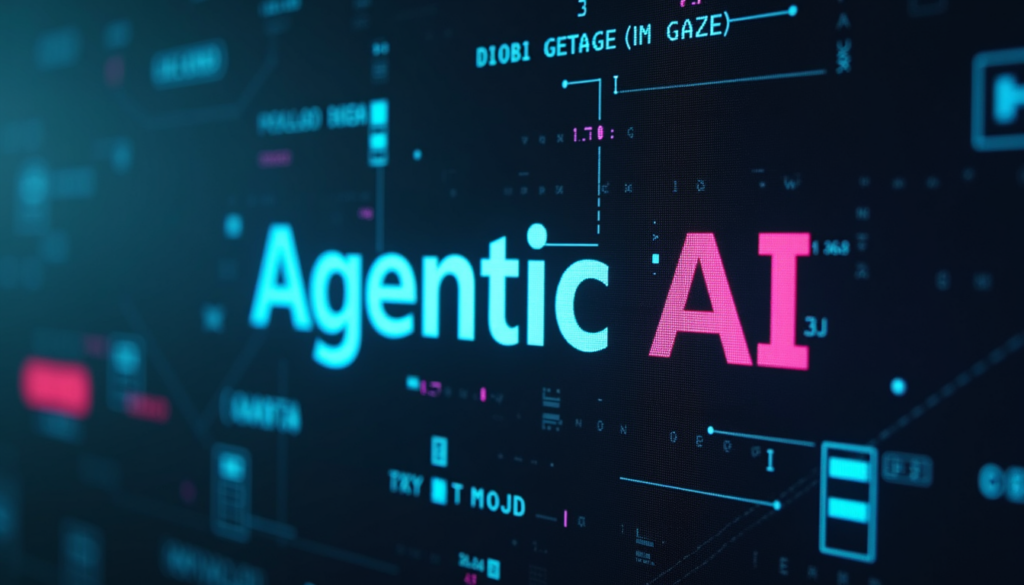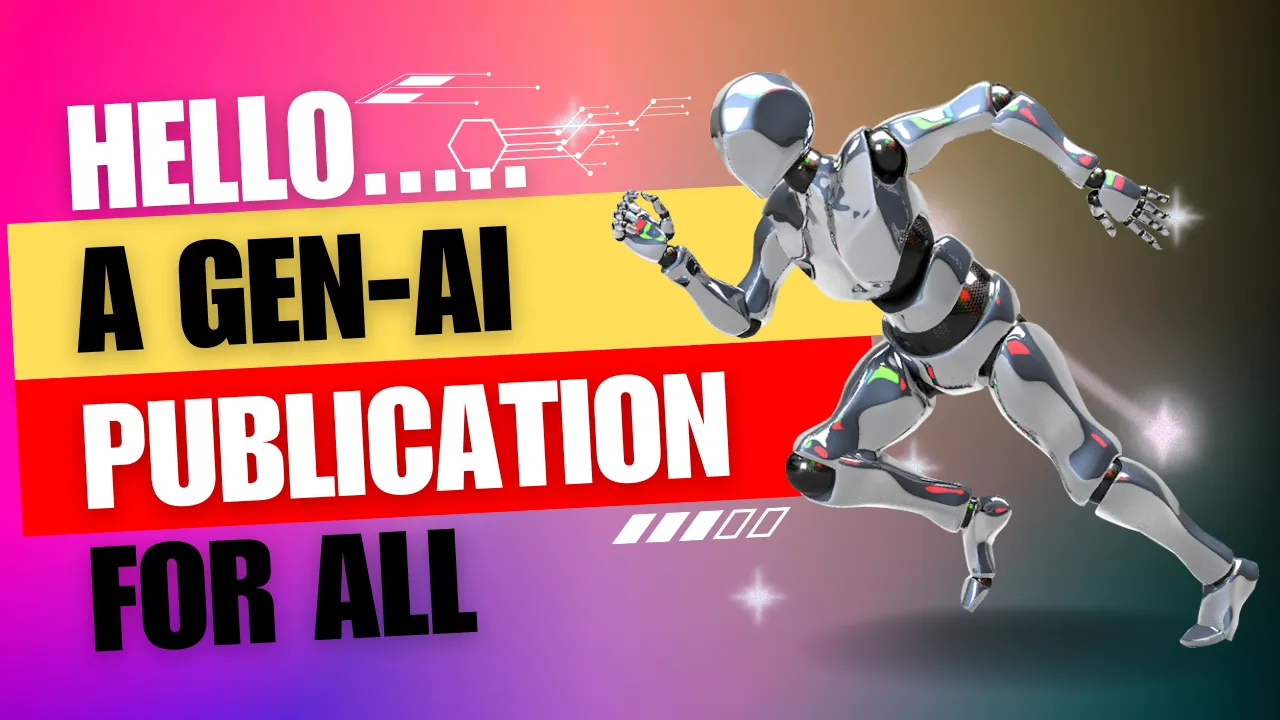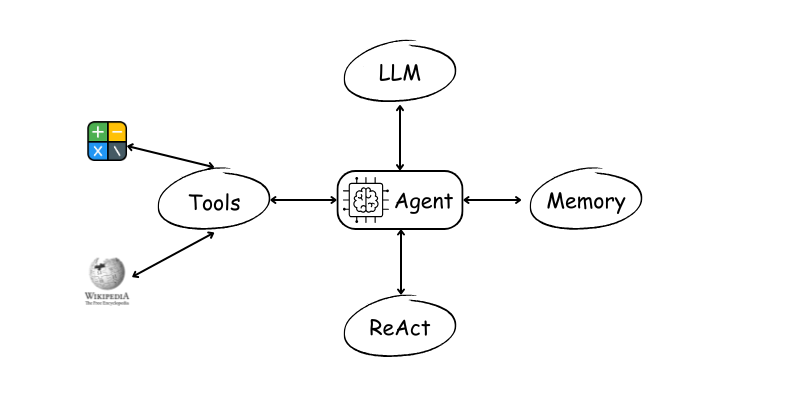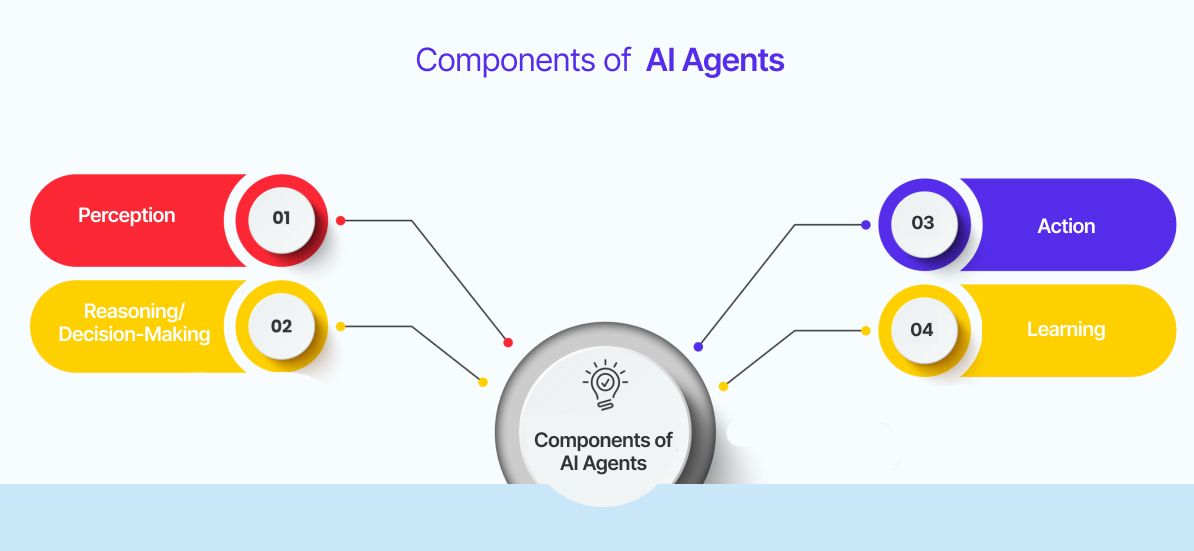
Over the past year, there has been immense hype and discussion around AI, particularly GenAI, Agentic AI, and RAG systems. This buzz has sparked significant shifts across industries, with everyone scrambling to understand: What exactly are agents? What defines "agentic AI"? How do we distinguish an AI system as "agentic" versus a non-agentic tool?
We’ve seen companies racing to adopt AI, startups pitching "agents-as-a-service," and a flood of new frameworks. But amid the noise, the fundamentals often get lost.
That’s exactly why we’re breaking it all down in this article. In this article, we will be explaining Agentic AI, AI agents, and recent GenAI trends in the simplest way possible.
Here’s what we’ll cover:
We’ll also unpack key concepts like:
Stick with us until the end, we’ll make sure you walk away with clarity on how these pieces fit into the bigger AI landscape.

To understand this, let's start with the basics: What are AI agents?
AI agents are systems powered by AI (typically LLMs) that interact with software, data, and even hardware to achieve specific goals. Think of them as proactive problem-solvers: they autonomously complete tasks, make decisions, and adapt to new information with no micromanaging required.
It's crucial to note that what makes a system truly "agentic" goes beyond just behavior, the implementation matters too. This is because traditional automated systems using if-else logic can mimic agent-like behavior, but true AI agents are distinguished by how their decisions are made. Instead of following pre-programmed conditional logic, they use LLMs to actively make decisions and determine their course of action. This fundamental difference in implementation (LLM-driven decision making versus traditional programming logic) is what sets genuine AI agents apart from sophisticated automation.
Unlike basic chatbots or static AI tools, agents plan and decide independently (guided by the user's input) until they nail the best result.
But how do they achieve this?
They achieve this through their brain(LLM). The LLM lets them:
In short, they’re goal-driven, self-directed systems and Agentic AI is the field focused on building and refining these autonomous agents.
An autonomous agent is an advanced form of AI that can understand and respond to enquiries and then take action without human intervention.
When given an objective, it can:
While all autonomous agents are technically AI agents, not all AI agents are autonomous.
Here’s the breakdown:
But note that both can learn and make decisions based on new information, but only autonomous agents can chain multiple tasks in sequence.
Imagine an AI assistant that seamlessly manages tasks on your laptop like a virtual assistant built into your laptop.
For example:
You ask it, “Do I have any emails from Abhy?” The agent interprets your request, decides to connect to your Gmail API, scans your inbox, and instantly pulls up every email from Abhy.
Or, “What’s trending in NYT news today?” The agent recognises it needs to search the web, crawls trusted sources (like NYT’s API), and spits out a bullet-point summary of key trends.
This system is called an “agent” because at every step, it uses its brain (the LLM) to:
Unlike basic chatbots that wait for step-by-step commands, AI agents autonomously bridge intent and outcome. They leverage tools, analyse context, and keep iterating until the job’s done.
Note: This example is software-based, but there are also hardware-based AI agents (physical ones), like robots or self-driving cars. These use cameras, mics, and sensors to capture real-world data—then act on it (e.g., a warehouse robot navigating around obstacles).
Now that we’ve nailed what agents are, agentic AI becomes straightforward.
At it's core, Agentic AI is the autonomy engine for AI systems. It’s the intelligence and methodology that lets agents act independently, the “how” behind their ability to plan, decide, and execute without hand-holding. Think of it as the framework (and mindset) for building agents that truly “think for themselves.”
We’ll break down the core components into two categories:
These are the foundational building blocks in every AI agent’s design. They include:
1. Large Language Models (LLMs): The Brain
LLMs are the powerhouses behind AI agents similar to the human brain. They’re responsible for:
2. Tools Integration: The “Hands”
Tools let AI agents interact with the digital world. In our earlier example, tools included Gmail APIs and web crawlers which was used to fetch data from external sources.
3. Memory Systems: The “Recall”
Memory allows agents to retain and reuse information across interactions (think personalised context!). Without it, an agent is like a goldfish, forgetting every conversation instantly.
Short-term Memory: Keeps track of the ongoing conversation, enabling the Al to maintain coherence within a single interaction.
Long-term Memory: Stores information across multiple interactions, allowing the Al to remember user preferences, past queries, and more.
Episodic Memory: Remembers specific past events or interactions, enabling the Al to recall and reference previous exchanges.
Semantic Memory: Holds general knowledge and facts that the Al can draw upon to provide informed response
Procedural. Memory: This is defined as anything that has been codified intuit the AI agent by us. It may include the structure of the system prompt, the tools we provide the agent etc

These define how agents “think” and act:
1. Perception: The “Senses”
This is the AI agent’s ability to gather and interpret data from its surroundings. Much like human senses, perception allows the agent to ‘see’ and ‘hear’ the world around it.
In the AI agent example above, the agent displayed the perception ability by interacting with APIs, databases, or web services to gather relevant information.
2. Reasoning: The “Logic”
Once an AI agent has gathered the relevant data through perception, it needs to make sense of that data. This is where reasoning comes into play. Reasoning involves analysing the collected data, identifying patterns, and drawing conclusions. It’s the process that allows an AI agent to transform raw data into actionable insights
3. Action: The “Doing”
This is the ability of the AI agent to bring it's decision to life. The ability to take action based on perception and reasoning is what truly makes an AI agent autonomous. Actions can be physical, like a robot moving an object, or digital, such as a software agent sending an email.
4. Feedback & Learning: The “Growth”
One of the most fascinating aspect of AI agents is their ability to learn and improve over time. Learning allows AI agents to adapt to new situations, refine their decision-making processes, and become more efficient at their tasks.

Just like the name suggests, a multi-agent system (MAS) involves multiple AI agents teaming up to tackle tasks for a user or system. Instead of relying on one “do-it-all” agent, MAS uses a squad of specialised agents working together.
Thanks to their flexibility, scalability, and domain expertise, MAS can solve complex real-world problems.
In centralised networks, a central unit contains the global knowledge base, connects the agents, and oversees their information. A strength of this structure is the ease of communication between agents and uniform knowledge. A weakness of the centrality is the dependence on the central unit; if it fails, the entire system of agents fails.
Example: Like a conductor in an orchestra, directing every musician.
In a decentralised network, there is no central agent or unit that controls the oversees information. The agents share information with their neighbour in a decentralised manner. Some benefits of decentralised networks are robustness and modularity. The failure of one agent does not cause the overall system to fail since there is no central unit. One challenge of decentralised agents is coordinating their behaviour to benefit other cooperating agents.
Example: A flock of birds adjusting flight paths without a leader.
Now that we’ve covered what AI agents are and how they work, let’s tackle the big question:
How do you actually build one?
(And which frameworks/libraries make it easier?)
Python dominates the AI/ML world, so familiarity with it unlocks countless SDKs and frameworks. But even non-coders can build agents using drag-and-drop GUI tools. Let’s break down the options:
For developers who want granular control over workflows, memory, and multi-agent collaboration:
LangGraph
Developed by the team behind LangChain, LangGraph takes things further by letting you design AI workflows as visual graphs. Imagine building a customer support system where one agent handles initial queries, another escalates complex issues, and a third schedules follow-ups; all connected like nodes on a flowchart. It’s perfect for multi-step processes that need to "remember" where they are in a task.
🔗 Docs | GitHub
Microsoft AutoGen
AutoGen is Microsoft’s answer to collaborative AI. With Microsoft AutoGen, you can have a system where one agent writes code, another reviews it for errors, and a third tests the final script. These agents debate, self-correct, and even use tools like APIs or calculators. It is ideal for coding teams or research projects where multiple perspectives matter.
🔗 Docs | GitHub
CrewAI
CrewAI organizes agents into specialized roles, like a startup team. For example, a "Researcher" agent scours the web for data, a "Writer" drafts a report, and an "Editor" polishes it. They pass tasks back and forth, refining their work until it’s ready to ship with no micromanaging required.
🔗 Docs | GitHub
LlamaIndex
Formerly called GPT Index, LlamaIndex acts like a librarian for your AI agents. If you need your agent to reference a 100-page PDF, a SQL database, and a weather API, LlamaIndex is the framework to go to. It helps it fetch and connect data from all these sources, ensuring responses are informed and accurate.
🔗 Docs | GitHub
Pydantic AI
Built by the Pydantic team, this framework acts as a data validator for your AI workflows. If your agent interacts with APIs, Pydantic AI checks that inputs and outputs match the expected data format. Like ensuring a date field isn’t accidentally filled with text. No more "garbage in, garbage out" chaos.
🔗 Docs | GitHub
OpenAI Swarm
OpenAI’s experimental Swarm framework explores how lightweight AI agents can solve tasks collaboratively. One agent gathers data, another analyzes it, and a third acts on it. It’s not ready for production yet but it's worth mentioning.
🔗 GitHub
Rivet
Rivet is like digital LEGO for AI. You just have to drag and drop nodes to connect ChatGPT to your CRM, add a "send email" action, and voilà, you’ve built an agent that auto-replies to customer inquiries. Perfect for business teams who want automation without coding.
🔗 Website
Vellum
Vellum is the Swiss Army knife for prompt engineers. It allows you to test 10 versions of a prompt side-by-side, see which one gives the best results, and deploy it to your agent; all through a clean interface. It’s like A/B testing for AI workflows.
🔗 Website
Langflow
Langflow is the drag and drop alternative to LangChain. You can just drag a "web search" node into your workflow, link it to a "summarize" node, and watch your agent turn a 10-article search into a crisp summary. It is great for explaining AI logic to your CEO.
🔗 Website
Flowise AI
Flowise AI is the open-source cousin of Langflow. You can use it to build a chatbot that answers HR questions by just linking your company handbook to an LLM—no coding, just drag, drop, and deploy.
🔗 Website
Chatbase
Chatbase lets you train a ChatGPT-like assistant on your own data. Upload your FAQ PDFs, tweak the design to match your brand, and embed it on your website. It’s like having a 24/7 customer service rep who actually reads the manual.
🔗 Website
Use Case
What’s your agent’s job? A coding assistant needs AutoGen’s teamwork, while a document chatbot thrives with Langflow’s simplicity.
Criticality
Are you building a mission-critical system? Opt for battle-tested tools like LangGraph. If experimenting, try experimental frameworks like Swarm.
Team Skills
If you have Python pros in your team, then go for code-based frameworks but if don't have Python pros in your team, GUI tools like Rivet or Chatbase will save the day.
Time/Budget
Need it yesterday? No-code tools speed things up. Got resources? Custom code offers long-term flexibility.
Integration
If you would need to plug in connectors like Slack API, Jira API etc, check if the framework supports those connectors out-of-the-box.
AIOps
If you will scale to a thousand users, prioritize frameworks with built-in monitoring, logging, and auto-scaling.
LLM workflows are essentially a series of interconnected processes that ensure an AI system can understand user intent, maintain context, break down tasks, collaborate among agents, and ultimately deliver actionable results. Think of LLM workflows as the recipe your AI agents follow. Just like baking a cake requires mixing, baking, and frosting steps, LLM workflows chain prompts, tools, and logic into a sequence.
For example, a customer support agent might:
Context management is the mechanism by which an AI system keeps track of ongoing interactions and relevant data. It ensures that the conversation or task remains coherent over multiple turns.
Ever chatted with a bot that forgets your name two messages later? That’s bad context management. Modern agents use memory systems to retain details across interactions.
For instance:
Prompt engineering involves crafting and refining the inputs given to an LLM so that it produces the most relevant and accurate outputs. Prompt engineering isn’t just typing questions. It’s crafting instructions LLMs can’t ignore. For example:
Agents don’t solve “Plan my wedding” in one go. They chop big tasks into bite-sized steps:
Multi-agent communication refers to the way multiple AI agents interact and share information with one another to collaboratively solve a problem. This is particularly useful in systems designed to handle complex or distributed tasks.
Picture a hospital where one agent diagnoses symptoms, another checks drug interactions, and a third books follow-ups. Multi-agent systems let specialists collaborate:
Even creatives use them—like AI writing teams drafting blog outlines while you sip coffee.
We've covered a lot of ground; from the basics of AI agents to the nitty-gritty of building them. Here's the key takeaway: Agentic AI isn't just another tech buzzword. It's a fundamental shift in how we interact with AI systems.
Whether you're a developer diving into frameworks like LangGraph and AutoGen, or a business leader exploring no-code tools like Rivet and Chatbase, there's never been a better time to jump into the agentic AI revolution.
Remember: The best AI agent isn't necessarily the most complex one. It's the one that solves real problems while being reliable, scalable, and (most importantly) actually useful in the real world.
The future of AI isn't just about smarter algorithms, it's about systems that think, plan, and act with purpose. And that future is already here.